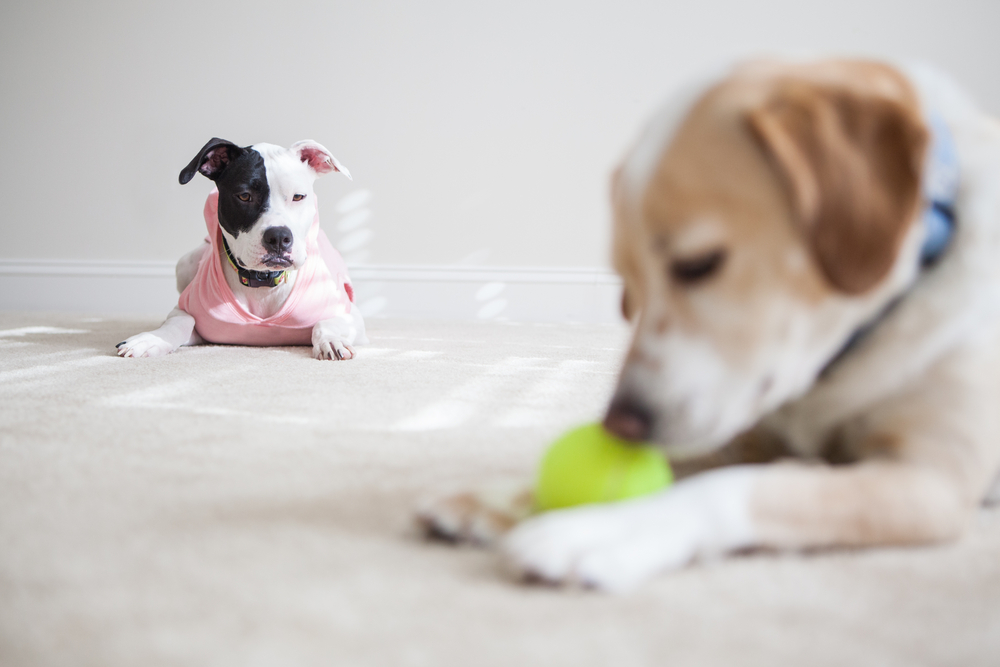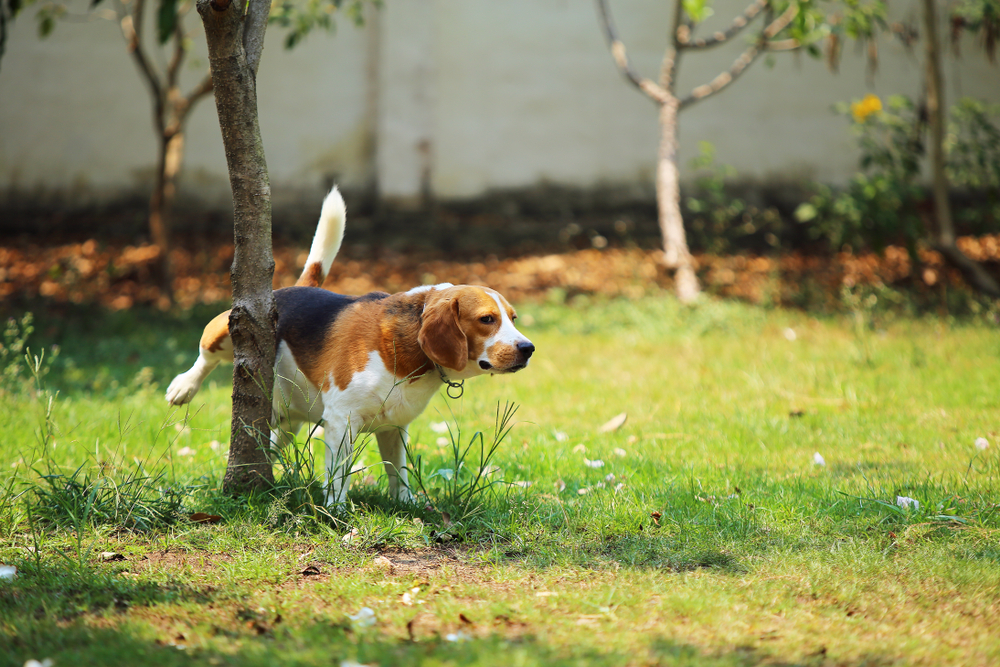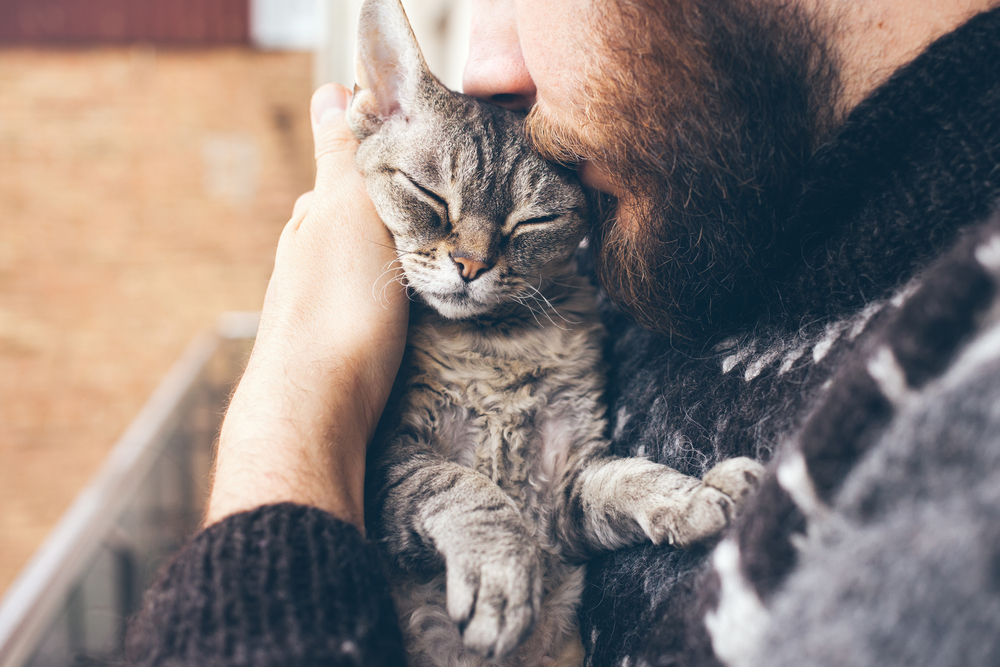Many people who have dogs have experienced the peculiar phenomenon of their dog getting anxious or upset when their owner is physically affectionate with another person. This begs the question: are dogs actually jealous or is it something else entirely?
Jealous behavior
In the science journal PLOS ONE, a study suggested that dogs may display jealous behavior. At the University of California, San Diego, a professor of psychology named Christine Harris worked with several dozen small dogs over just short of a year, recording specific behavior patterns. In particular, her study focused on how dogs react when their owners ignored their pets and instead interacted with various other objects, including stuffed dogs, jack-o-lantern pails, and children’s books. After reviewing the footage, they concluded that dogs display different levels of jealousy depending on how close the object approximated another human or dog.
For example, in the case of the stuffed toys that looked like dogs, the pets attempted to engage 78% of the time, got between the owner and the toy 30% of the time, and showed aggression toward the toy 25% of the time.
These numbers dropped lower when it came to the toys that looked like jack-o-lanterns, with only 42% physically engaging, 15% attempting to intervene, and only 1% displaying aggression.
Finally, when the owner was simply engaging with a children’s book, dogs only physically engaged 22% of the time, put themselves between the book and their owner 7% of the time, and didn’t display any aggression.
Consequently, Harris concluded that dogs saw stuffed toys in the image of dogs as rivals, unlike jack-o-lantern pails and books. Jealous behaviors mainly appeared when the object of the owner’s attention resembled another dog.
Claim staking
One perspective, famously embraced by Cesar Milan, is that dogs don’t actually get jealous. Instead, they stake claims to their owners and try to drive away any other dogs or people that try to interfere. In other words, they aren’t getting jealous in the way a person might imagine, but are rather defending their territory.
Rewards
To support Milan’s argument, there have been claims that dogs simply lack the necessary cognitive functions to experience jealousy. According to Stanley Cohen, Ph.D., there are two kinds of emotions: primary and secondary. Secondary emotions require more cognitive processes and aren’t possible for many simpler animals. He points out that since jealousy is a secondary emotion, it may be possible that dogs don’t have the capacity to feel it.
In his article, he cites a particular study from the University of Vienna, where researchers testing two dogs on completing tasks, but only rewarded one of them afterwards. Naturally, the dog that didn’t receive rewards was dissatisfied and quickly stopped performing the required task. This may sound like jealousy, but it may be much more basic than that.
Another study by the same team made the difference quite apparent. Once again, they had two dogs perform tests. This time, instead of rewarding only one of them, they instead rewarded them with very unequal rewards, with one receiving an obviously preferable reward. If dogs did experience jealousy the same way humans did, then the dog with the lesser reward would likely be dissatisfied and complain. However, that is not what happened. Both dogs were simply happy to be rewarded and continued with the experiment.
Is the evidence conclusive?
While there are dog behaviors that may seem like jealousy at first glance, it’s tough to tell if they’re really jealousy in the way us humans understand it. Research suggests that there are some differences between how dogs and humans understand the emotion, but the extent and specifics are still mostly unknown.





